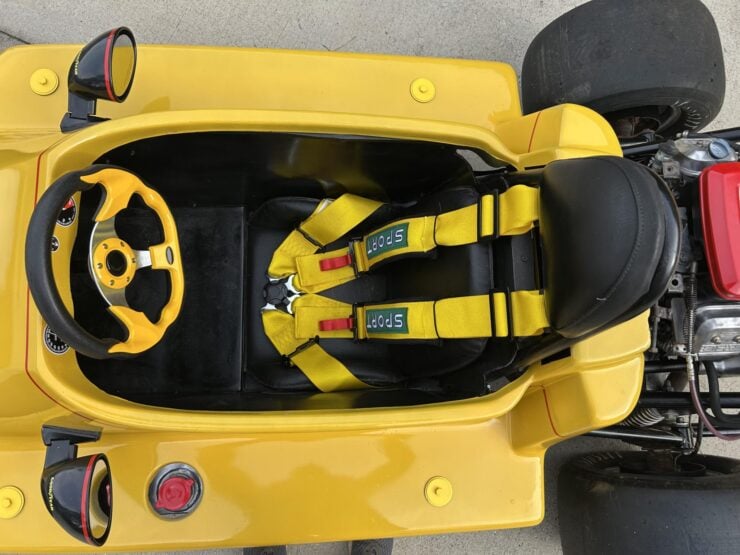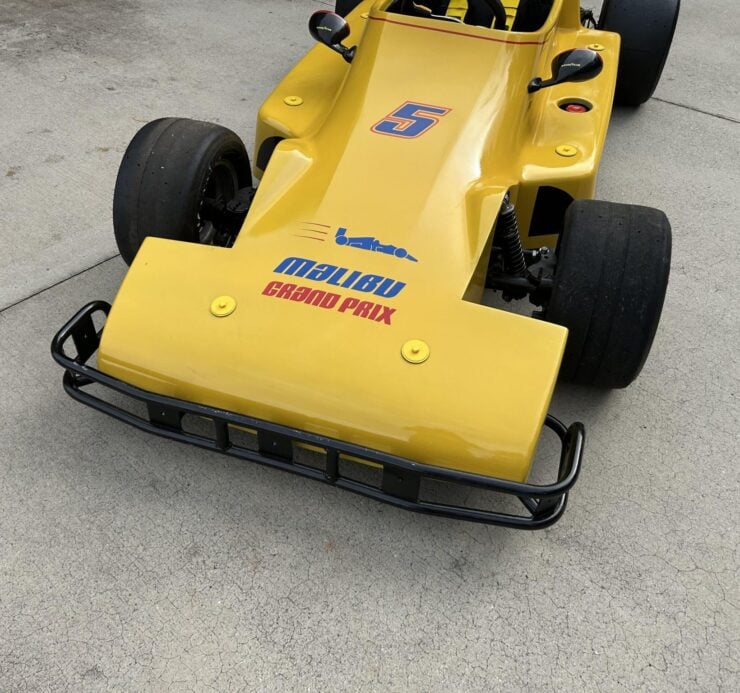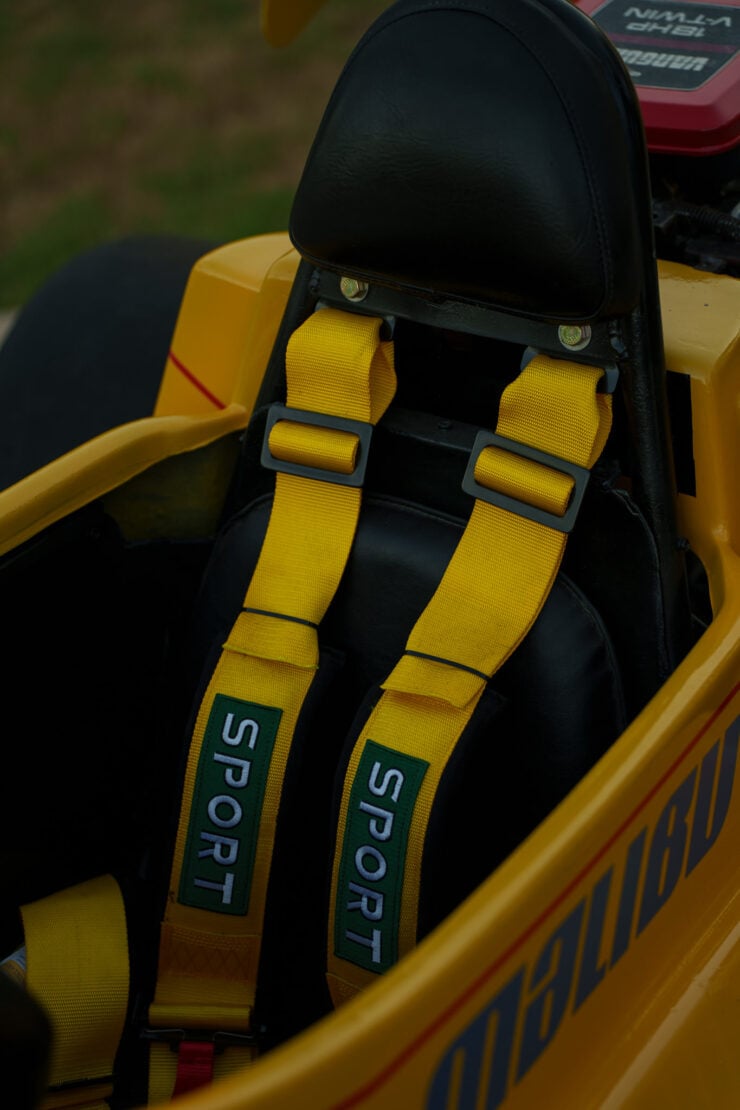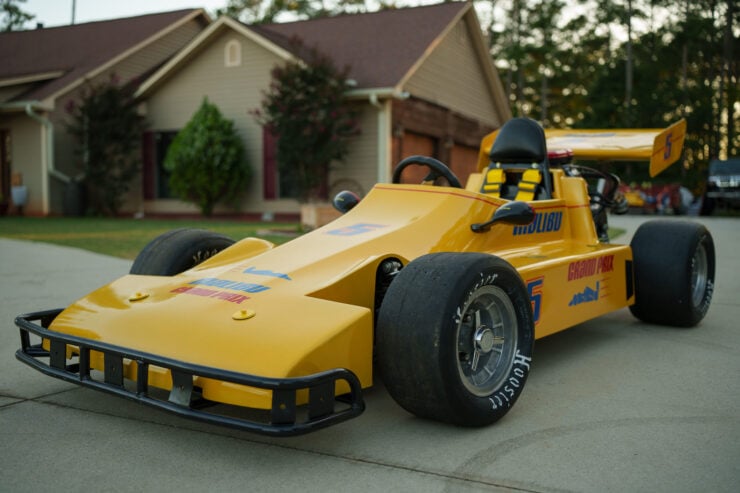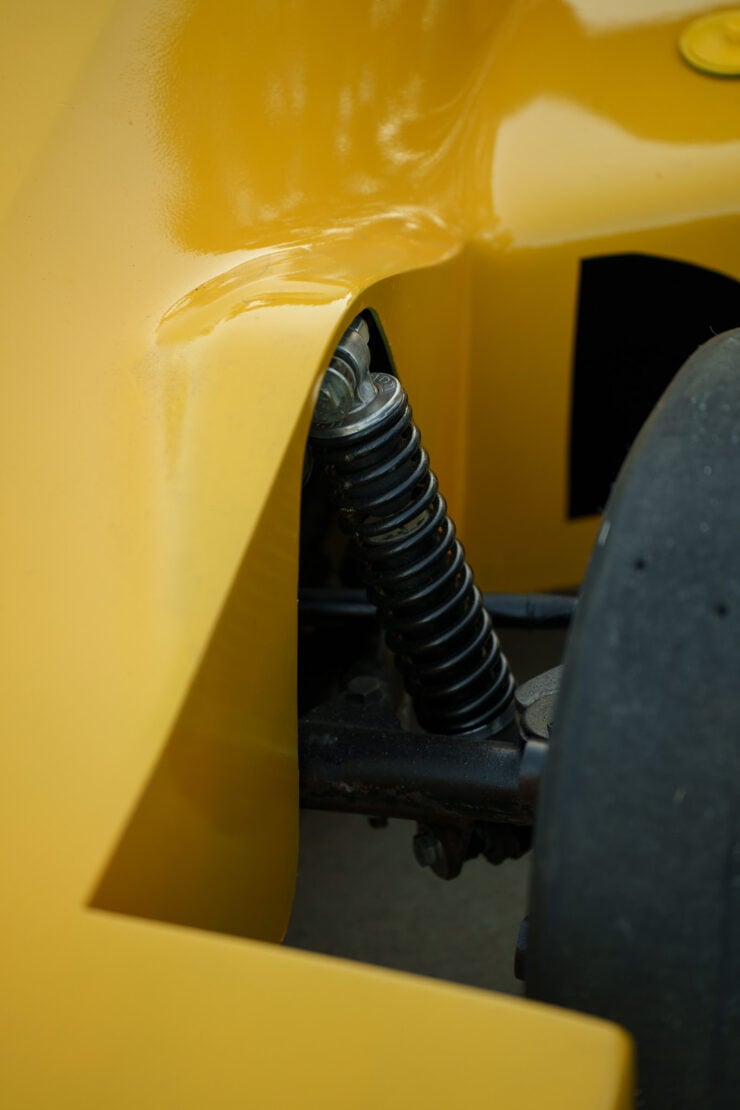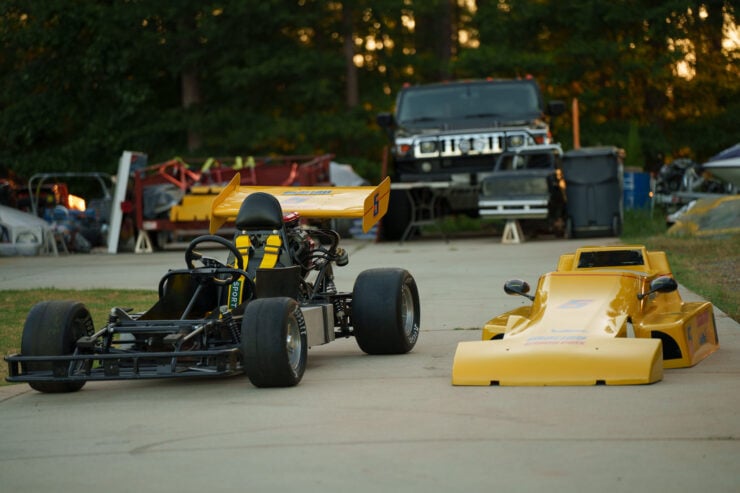This is an original vintage Malibu Grand Prix Virage go-kart that was based on designs developed by a team including John DeLorean and his brother Jack, with a view to creating an approachable nationwide kart racing franchise powered by Wankel rotary engines.
Unlike many go-kart tracks of the era that often used 50cc – 125cc karts producing 4-6 bhp, Malibu Grand Prix offered much more powerful mini-Indy-style cars with 700cc engines good for almost 20 bhp. They had full fiberglass bodies over tubular steel chassis with rear mounted engines.
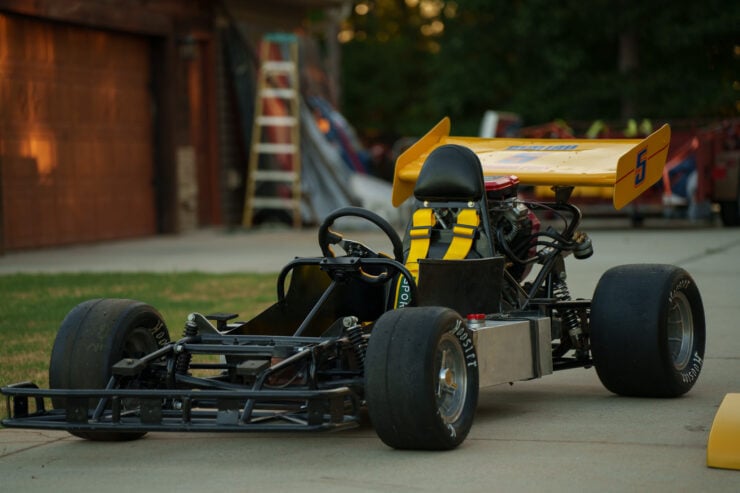

History Speedrun: Malibu Grand Prix + John DeLorean
Long before Malibu Grand Prix became a nationwide kart-racing phenomenon in the 1970s, its earliest origins were tied to an ambitious but short-lived venture backed by none other than John DeLorean. DeLorean was known for his maverick approach as the head of the Pontiac division at GM and later for the release of the ill-fated DeLorean DMC-12.
DeLorean played a crucial early role in shaping Malibu Grand Prix, though strangely enough, his name rarely appears in its official history today.
The origin story of Malibu Grand Prix begins with Grand Prix of America, a Michigan-based company founded in the early 1970s with John DeLorean’s close support – he even tried to get General Motors onboard to support the concept officially. Grand Prix of America set out to develop a high-end, single-driver racing experience using three-quarter-scale open-wheel cars.
These weren’t kids’ carnival toys – they were purpose-built racing machines with enclosed cockpits, disc brakes, Sachs-Wankel rotary engines, and fiberglass bodies styled after the full-scale race cars of the time.
Aimed at adults and serious enthusiasts, these cars offered timed laps on short circuits without head-to-head racing. But despite its eye-catching design and the promising underlying concept, Grand Prix of America struggled financially and folded by 1975 after failing to find additional investors.
This was where California entrepreneur Ron Cameron stepped in. He acquired the remnants of Grand Prix of America, including its car designs, and launched the first Malibu Grand Prix in Anaheim, California, in 1975.
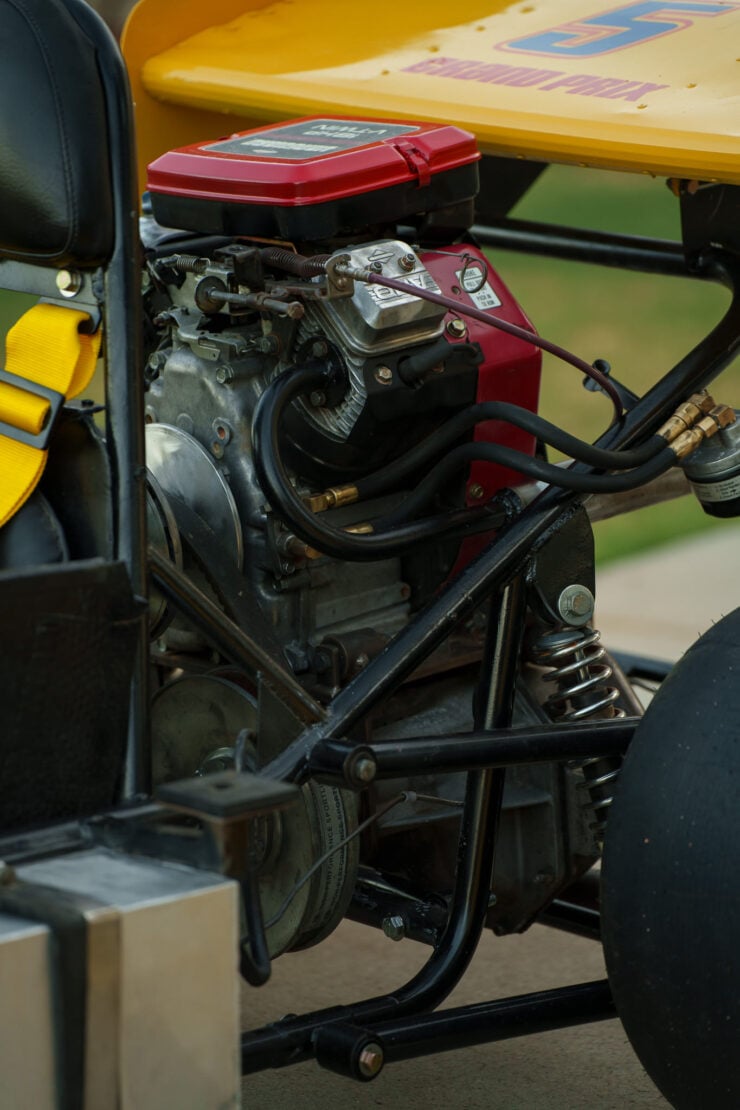


Unlike the Michigan prototype, Cameron’s version simplified the format. The rotary engines were retained initially, and later replaced by more affordable (and easier to maintain) Briggs & Stratton units. Each driver took the track alone, competing for fastest lap times. Locations had custom-built tracks, electronic timing systems, and adjacent arcades, drawing tens of thousands of paying customers weekly.
Within a year, Malibu Grand Prix had expanded beyond California into cities like Houston and Tucson in Texas and Arizona respectively.
The Malibu Grand Prix experience was designed to feel like real racing, and for many drivers, it was. Some tracks operated with adult-only licenses, and the timing systems introduced many to the thrill of chasing tenths of a second to beat your friends (or rivals). Celebrities like Paul Newman, a young Leonardo DiCaprio, and Tupac Shakur were known to frequent the tracks, and Trans Am racer Tommy Kendall got his start behind the wheel of a Malibu Grand Prix car.
In 1977, Warner Communications, then the parent company of Atari, acquired Malibu Grand Prix, seeing a potential link between arcade gaming and the real life racing experience. Under Warner’s ownership, the chain expanded internationally, reaching Canada, Europe, Asia, and Australia.
By the mid-1980s, declining profits and rising costs began to take their toll. After changing ownership several times, most locations eventually shuttered or were absorbed by Palace Entertainment in the 2000s.
Today, the original Malibu Grand Prix cars occasionally come up for sale and typically attract plenty of attention. They offer a significant step up from regular go-karts, without the expense of full-scale open wheeled race cars.
The Malibu Grand Prix Virage Go-Kart Shown Here
This is an original Malibu Grand Prix car from the track that was in Anaheim, California – the River Park arrive-and-drive kart rental circuit. It has a yellow fiberglass bodywork over a black chromoly frame designed to look like a smaller version of the Indy cars of the era.
It’s powered by a 694cc Briggs & Stratton Vanguard OHV V-twin which is linked to the rear wheels via a centrifugal clutch and chain drive, it produces 18 factory-rated horsepower and it has a pull starter.
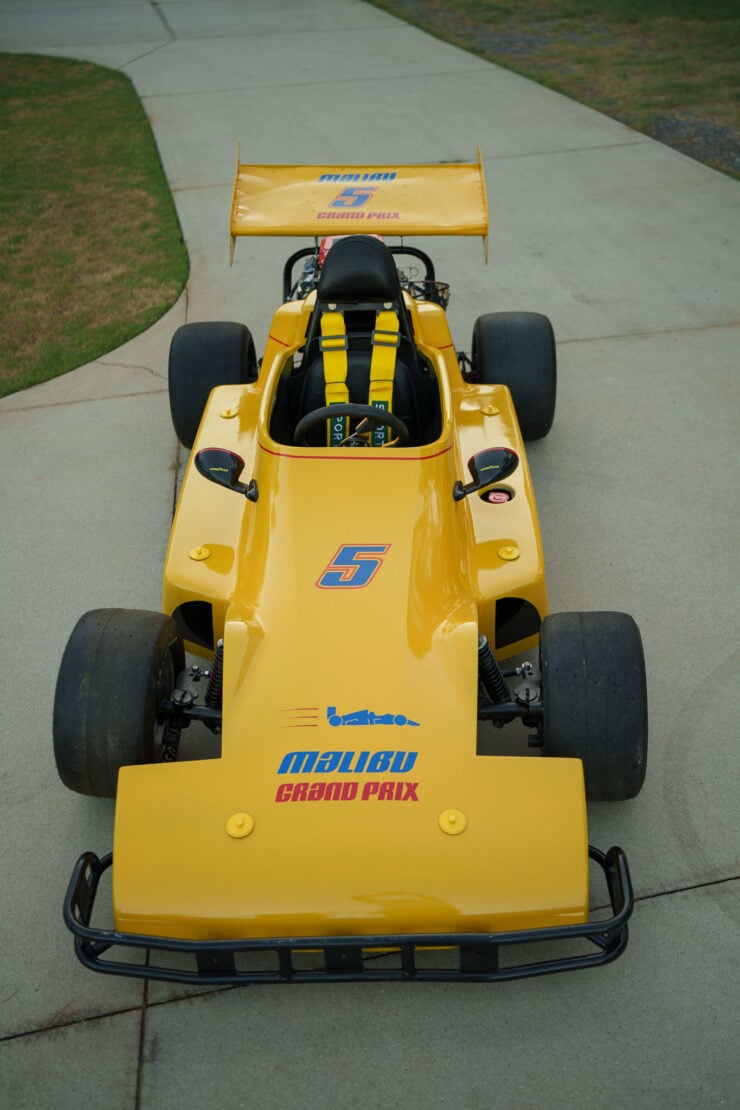


It has front and rear wings and bumpers, a black seat with an integrated headrest, a yellow seat belt, twin fuel tanks, a black and yellow three-spoke steering wheel, and it has both front disc brakes and coil-spring suspension.
It’s now being offered for sale out of Anderson, South Carolina at no reserve on a bill of sale. If you’d like to read more about it or place a bid you can visit the listing here.
Images courtesy of Bring a Trailer


